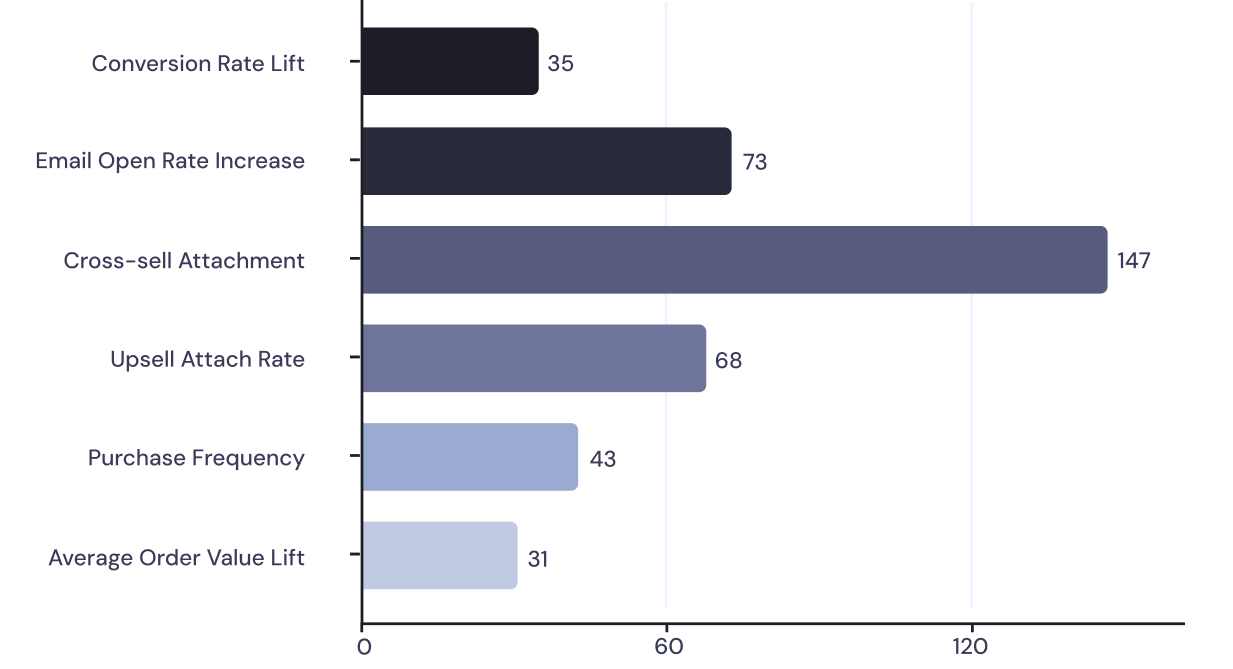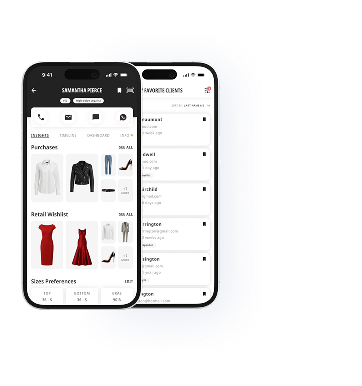

The convergence of economic pressures, technological advancements, and evolving consumer expectations has created a perfect storm driving clienteling adoption across the retail sector. With cart abandonment rates in US retail hovering between 74-77%, retailers face massive value leakage that personalized engagement strategies can help recover. Meanwhile, the luxury retail market's projected growth to €305 billion by 2025 demonstrates the premium positioning opportunities available through superior customer relationship management.
Modern clienteling represents a paradigm shift from reactive, transaction-focused interactions to proactive, relationship-centered engagement strategies. Where conventional retail approaches treat customer interactions as discrete events, clienteling views each touchpoint as part of an ongoing relationship narrative that builds over time and across channels.
Organizations implementing comprehensive clienteling strategies demonstrate superior market performance across multiple dimensions, with 73% reporting revenue growth exceeding industry averages and 89% achieving customer satisfaction scores above 4.5/5.0. The financial impact is equally compelling, with typical implementations generating year-one ROI between 187-312% and payback periods under 11 months.

The revenue impact of clienteling manifests through both conversion optimization and customer lifetime value enhancement. Personalized product recommendations drive a 35 basis point lift in conversion rates versus generic assortments, while targeted email campaigns powered by clienteling data achieve 29.3% open rates compared to the 16.97% industry benchmark. The cross-sell attachment rates increase by 147% when associates leverage unified customer profiles, and upsell attach rates climb by 68% with comprehensive customer intelligence.
Beyond revenue growth, clienteling delivers significant cost efficiencies across multiple operational dimensions. Customer acquisition costs—which have increased by 60% over the last five years—can be reduced by up to 50% through personalized marketing. Clienteling-driven CAC reductions average 38% through enhanced customer referral generation, as delighted, repeat-purchase customers generate 2.4× more word-of-mouth referrals than typical shoppers. Operational efficiency gains include 23% faster inventory turnover due to demand forecasting precision, 31% lower markdown rates through targeted replenishment and allocation, and 42% fewer customer service tickets through proactive issue resolution.
Statistical analysis reveals that customers receiving personalized service through clienteling programs demonstrate 78% stronger emotional brand connections compared to traditional retail interactions. Net Promoter Scores among clienteled customers average 67.3 versus 41.2 for standard retail experiences, indicating significantly higher advocacy potential and brand loyalty.

When clienteling data informs inventory decisions, marketing communications, and service delivery protocols, customers experience cohesive, personalized engagement across all touchpoints. This integrated approach reinforces brand trust and strengthens customer relationships over time, creating a virtuous cycle of increased loyalty, higher spending, and positive word-of-mouth referrals.

Successful clienteling implementation requires a strategic approach spanning technology infrastructure, associate capabilities, and organizational processes. This comprehensive framework ensures that retailers can fully capture the potential business benefits while avoiding common implementation pitfalls.
• Effective clienteling requires integration of 12.3 different data sources on average
• Essential integrations: POS systems (100%), e-commerce platforms (89%), mobile apps (76%), loyalty programs (92%), social media interactions (54%)
• Data processing volumes: 2.3-8.7 million customer touchpoints monthly for mid-size retailers, scaling to 45-120 million for enterprise implementations.
• Relationship building skills beyond traditional product knowledge
• Technology proficiency for effective platform utilization
• Customer psychology and behavior analysis capabilities
• Communication adaptation based on individual customer preferences
• Customer profile completeness increases from 34% to 87% average post-implementation
• Data accuracy improves by 156% following platform deployment
• Real-time data availability increases from 23% to 94% of customer interactions
• Customer tag/preference capture rates boost by over 190%
• KPI framework redevelopment to incorporate relationship metrics
• Incentive structure realignment to reward relationship building
• Cross-functional coordination between marketing, operations, and customer service
• Continuous improvement mechanisms based on performance analytics
The implementation timeline typically spans 12-16 weeks for mid-size retailers, with enterprise deployments requiring 20-26 weeks depending on integration complexity and organizational readiness. Critical success factors include executive sponsorship, cross-functional steering committees, and phased deployment approaches that deliver quick wins while building toward comprehensive capabilities.
Beyond the foundational implementation elements, retailers must address several advanced strategic considerations to maximize the long-term value of their clienteling initiatives and maintain competitive advantage in an evolving marketplace.
In increasingly saturated retail markets, clienteling provides sustainable competitive differentiation that is difficult for competitors to replicate quickly. While competitors can match product offerings, pricing strategies, or store formats relatively easily, building comprehensive customer intelligence and developing associate capabilities for effective clienteling requires significant time and resource investment.
Global implementations must adapt clienteling strategies to accommodate cultural differences in communication styles, relationship expectations, and privacy preferences. Successful international programs incorporate cultural nuances, communication protocols, and relationship-building expectations that vary across markets into their technology platforms and training programs.
The retail technology landscape continues to evolve rapidly, with 2025 positioned as the year of the AI agent, featuring AI-powered personalization, streamlined decision-making, and automated replenishment capabilities becoming standard. Successful clienteling programs must be designed with flexibility to accommodate emerging technologies and changing customer expectations, requiring technology platform selection criteria that emphasize adaptability, integration capabilities, and vendor innovation track records.

Bayretail is built on Salesforce as an ISV app, leveraging standard retail data models for maximum compatibility and scalability. The platform includes prebuilt connectors for Adyen, Meta WhatsApp, Vonage, and Booxi for rapid integration, while open APIs enable seamless connection with any POS, e-commerce, or marketing system. This cloud-native architecture ensures scalability and reliability across even the most demanding retail environments.
Global deployment capabilities include multi-brand, multi-language support (23 languages) for international operations and unlimited customer profiles to accommodate enterprise-scale implementations. The future-ready platform grows seamlessly as retailers expand operations, providing a sustainable foundation for long-term clienteling success.
Bayretail delivers quantified performance results, including 44% lift in sales per square foot across customer implementations, 38% reduction in customer acquisition cost through enhanced customer relationships, and 27% boost in customer lifetime value within the first year of deployment. Typical year-one ROI ranges from 187-312% with payback periods under 11 months, while cumulative three-year ROI exceeds 447% for comprehensive implementations.
Customer success examples include a luxury fashion chain achieving 47% sales increase through personalized customer engagement, a home goods retailer realizing 34% productivity gain via streamlined associate workflows, and an electronics retailer experiencing 67% cross-sell success rate through intelligent product recommendations. These real-world results demonstrate Bayretail's ability to deliver measurable business impact across diverse retail segments.
The Bayretail Clienteling Solution offers a scalable, data-driven platform to equip store associates with the tools they need to deliver personalized, high-value interactions—at scale.Tailored for luxury and premium retail brands, the solution bridges the physical and digital experience, driving measurable business impact across customer satisfaction, basket size, and repeat purchases.
Bayretail delivers a comprehensive suite of clienteling functionalities, seamlessly integrated into the store workflow :

Reduces tech complexity and accelerates time-to-value.
Built around clienteling best practices.
Validated across leading global retail brands.
Future-ready design aligned with market trends.
EU-based, GDPR and U.S. compliance built-in.

The transformation of retail through clienteling represents a fundamental shift toward relationship-centered business models that prioritize long-term customer value over short-term transactional efficiency. The comprehensive evidence demonstrates that organizations implementing sophisticated clienteling strategies achieve substantial competitive advantages through improved customer loyalty, increased revenue performance, enhanced operational efficiency, and strengthened market positioning.

With customer acquisition costs rising 60% over five years and personalized marketing offering up to 50% CAC reduction, delay in clienteling implementation represents a significant competitive disadvantage. It's essential to view clienteling as a comprehensive business strategy rather than a tactical service enhancement, investing in technology infrastructure, human capabilities, and organizational processes for sustained success. Establishing metrics that track customer lifetime value, associate productivity, and operational efficiency will enable continuous optimization of clienteling program effectiveness.
The retailers that will thrive are those viewing clienteling as a comprehensive business strategy, seamlessly blending technological sophistication with authentic human relationship building to create personalized experiences that feel both cutting-edge and genuinely personal.
This balance represents the ultimate expression of modern clienteling—where technology amplifies human capabilities rather than replacing them, enabling scale without sacrificing the personal touch that drives lasting customer loyalty. As the retail landscape continues to evolve, clienteling will increasingly become not just a competitive advantage but a fundamental requirement for sustainable retail success in an increasingly personalized marketplace.

Get in touch to schedule a full demo of the Retail Super-App and discover how it can help your brand do more.